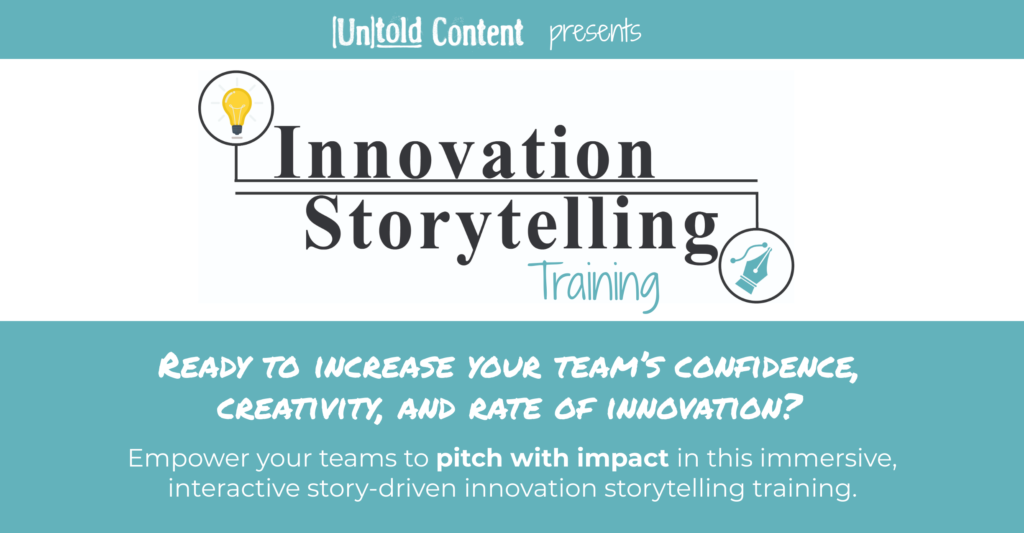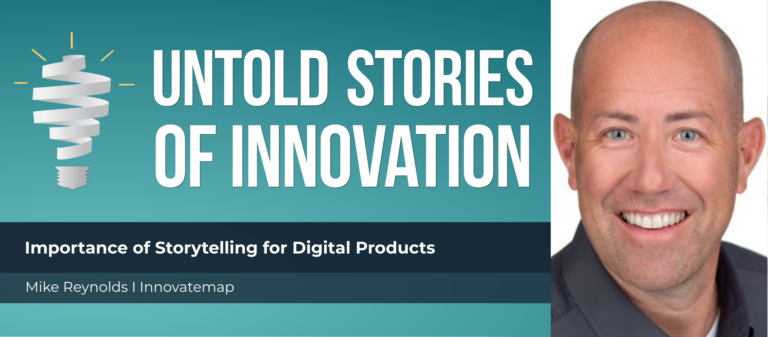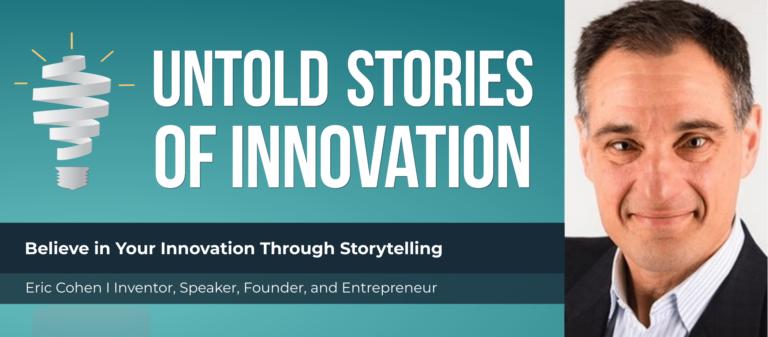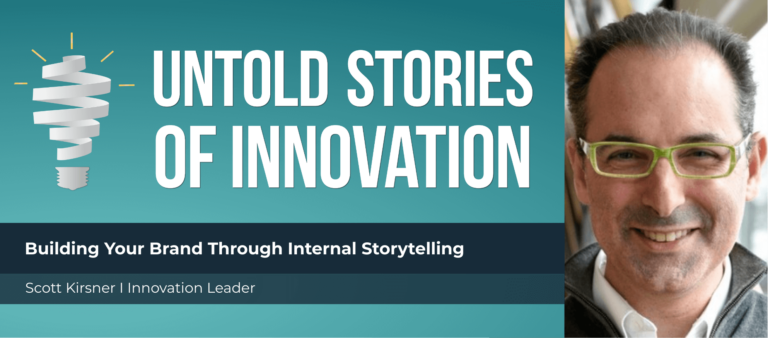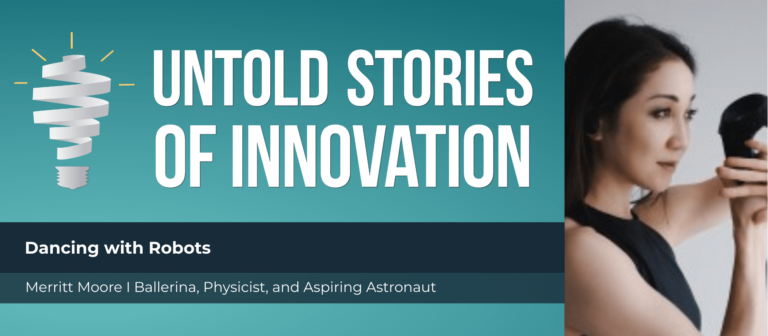Social Enterprise Innovation with Bill Tucker of Flywheel
Social Enterprise Innovation - Untold Stories of Innovation
“It's important to step out of your own circle and find those individuals with whom you can connect that will help you amplify and refine your story.” —Bill Tucker, Executive Director at Flywheel
From today’s episode you’ll learn:
Why do stories matter to the innovation process? What values can be instilled in innovators who share stories? How do innovation leaders inspire creators to tell and share their success and failure stories?
We speak with Bill Tucker, Executive Director at Flywheel Social Enterprise Hub. Flywheel is a home for social entrepreneurs, where individuals and organizations join together to support businesses with social impact and create social change in their communities. From growing startups to large businesses, Bill offers insights into the role of social innovation in a changing marketplace.
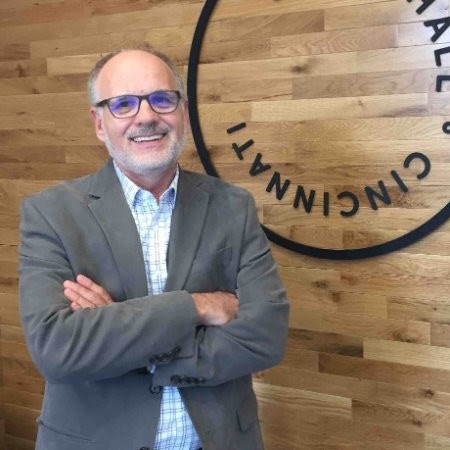
Bill Tucker is a former executive in the commercial printing business where he held a variety of leadership positions at RR Donnelley until he transferred his talents to the social enterprise sector in 2011. As Executive Director of Flywheel Social Enterprise Hub, a Cincinnati, Ohio nonprofit, he guides the agency as it builds the capacity of social enterprises. Under his leadership, Flywheel has become part of Cincinnati’s entrepreneurial ecosystem, bringing resources to the social enterprise sectors that are typically reserved for high growth, technology startups.
untoldcontent.com/trainings/innovation-storytelling-training
TRANSCRIPT – Social Enterprise Innovation
This episode, Social Enterprise Innovation is powered by Untold Content’s innovation storytelling training. Increase buy in for your best ideas in this immersive and interactive, story-driven experience. Where your teams refine storytelling techniques for their latest projects, prototypes and pitches—and get inspired by 25 epic examples of impactful innovation stories. Learn more at https://untoldcontent.com/innovationstorytellingtraining-2/.
Katie: Welcome to Untold Stories of Innovation, where we amplify untold stories of insight, impact and innovation. Powered by Untold Content, I’m your host, Katie Trauth Taylor. Our guest today is Bill Tucker. He’s executive director at Flywheel Social Enterprise Hub, which supports businesses with a double bottom line of purpose and profit. Bill, I am so grateful to have you on the podcast to talk about social innovation and impact and the role that storytelling plays in driving it forward.
Bill: Thank you very much, Katie, and I’m really happy to be here as well. It’s fun to be in the studio and fun to be part of this series.
Katie: You know, I like to start with asking about your personal story of innovation. What brought you to Flywheel? What was your journey?
Bill: So I spent three plus decades in the commercial printing business and realized that as much as I love this city, that all my relationships tended to be outside of this community. In a community that I’d really come to love, I just didn’t feel like I was doing enough. And I felt like there was more that I could do. And that led me to do early retirement. And rather than playing golf or sitting on the board of a nonprofit focused on one particular issue, I had the opportunity to step into the nonprofit world, initially supporting businesses that, as you described them, often called social enterprises or social ventures or social impact businesses. But businesses that have that double bottom line of both purpose and profit. And I found that those skills that I had acquired in the commercial printing business really had applicability. And so, as I was just saying to someone earlier today, I work harder than I’ve ever worked in my entire life, but there’s not a day that I go home or a morning that I get up that I am not absolutely looking forward to the opportunity to engage with people who are making a huge difference in this community. I am a lucky man.
Katie: Absolutely. And I’ve had the honor of sort of watching Flywheel grow, watching different cohorts graduate from the accelerator. And it’s incredible how — I don’t think that social innovation or social enterprise is sort of a niche anymore. It is critical and central to the sort of identity of innovation in our country. Do you feel that way as well?
Bill: Oh, absolutely. I think that particularly as the newer generations come into the marketplace, I think what they do is they have put a tremendous value on the impact of those businesses. I heard somebody talking yesterday about the notion of “everything we do, whether we’re purchasing, we’re donating, we’re, you know, driving, whatever we’re doing has some type of social impact. And the question is, do we make that impact positive or do we make it negative? And how do we find balance in that?” So, yeah, it’s definitely, definitely changing.
Katie: Tell us about some of the innovation stories emerging out of the startups that graduate from Flywheel.
Bill: So you kind of asked me the question, like, which is my favorite child. And I don’t know if that’s going to be fair.
Katie: I’m so sorry. That’s totally unfair.
Bill: I think the thing that I would say is — and what really excites me the most — we have great companies that we touch. Great founders. And that’s maybe a better way of describing people that are passionate about what they’re doing, whether it’s starting a coffee shop or starting a business designed to accelerate a relationship between a parent and a teacher. All of those founders come to us with the idea of getting help to help them figure out how to create a business model and how to deploy that business model actually in the marketplace. And that’s exciting and it’s fun. But I will tell you what makes it even more fun is that — and what makes it more impactful — is that we’ve been able to aggregate a community around these founders. So we have some awesome coaches in our accelerator, which is called Elevator. We just had our demo day, which is the big event of the year—
Katie: It was amazing.
Bill: — just earlier this week. And we had 13 mentors who in some cases were working almost full time for a period of 15 weeks up in these companies getting ready for demo day. We have another dozen or more that are also working in other programs that we have. And that’s just awesome. And then I think about the startup community itself and how we have been embraced by that startup community. The folks at Cintrifuse — in particular Wendy Lea, who started that and welcomed us into the Cintrifuse workspace, and now continue with Pete Blackshaw and the rest of the crew down there — have helped us integrate into that startup ecosystem. And so when we run our accelerator and other programs, we have people from all different organizations in this community that support startups. It includes EY and includes Dinsmore & Shohl, and it includes Cincy Tech and Queen City Angels and just a variety of companies that recognize that their impact in the community can be more than just a financial impact. And it’s just really fun to see those companies, those businesses, those organizations really lean into it. We’re really grateful for that.
Katie: Something that’s so powerful about social innovation is its ability to create a pull strategy. And I think now even organizations or startups or even enterprises that are socially driven or socially— they’re not the only ones who care about this now. There’s a lot of transformation that we’re seeing inside of companies that maybe didn’t necessarily start with purpose and profit as their core objectives, it was maybe a little more profit leading. And now, you know, you see that having a social impact needs — the consumers are increasingly desiring that kind of mission and impact on the world. So, you know, could you speak a little bit to how social innovation matters across all business?
Bill: I think this interview’s only a half an hour but that would probably take me an hour and a half. So I think that — and Wendy Lea, who I’m a great admirer of, talks often about the role of disruptors and people in ecosystems that bring new ideas to the fore and then find partners who can help them accelerate that. And I think that is kind of a key concept here. Social innovation — or innovation at all — is when somebody is given the opportunity to be that disruptor and to take maybe a way of solving a problem that’s been, you know, done for decades, if not centuries, and turn it around and find a new way to address that. We can see that every day in our lives, but in the social sector, it’s even more important. You know, we have some real big challenges in this country, but we’ve also got some great successes and we’ve got lots of opportunity. And when I see 200 plus people in a room at Union Hall earlier this week and just totally energized on the idea of how they can make more impact in this community and use the power of the marketplace to multiply that, there’s no doubt in my mind that it’s changing. Absolutely.
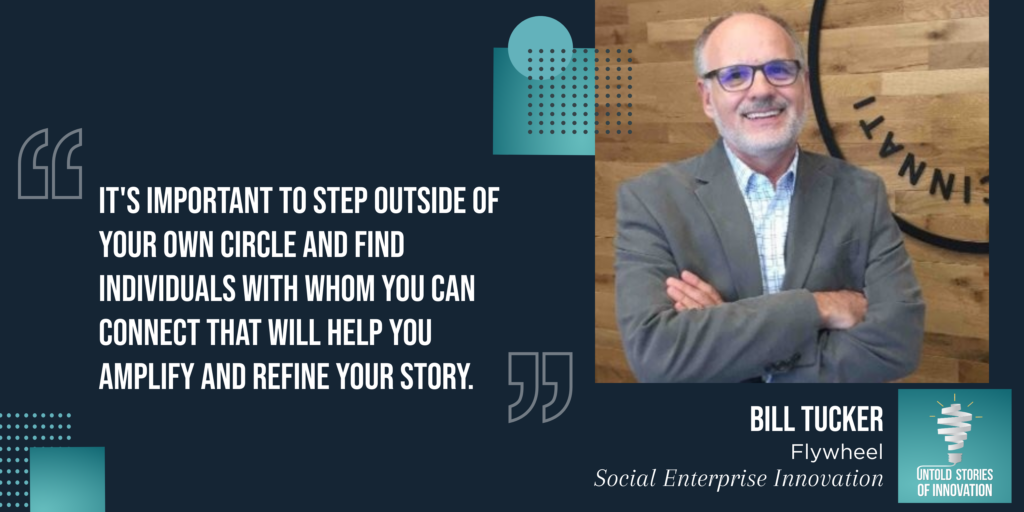
Katie: What role do you feel Flywheel plays — and social enterprise hubs play — in helping nonprofits or community advocates or those who are philanthropists start to open their eyes to opportunities that might be more business driven?
Bill: So I’m going to take your question and just twist it just a little bit.
Katie: Sure.
Bill: Because I think the issue, whether — regardless of what your tax status is — the issue is how do you create a business? And when you create a business, there’s one thing that every business needs, and that’s access to capital. For a nonprofit that means philanthropists, means donors, donations, and means foundations that provide funding. For a startup it means — that’s in the for-profit space — it means that you’ve got to have somebody that’s going to give you money to help you do that, or you’re going to have to generate it on your own, or you’re going to have your own wealth to be able to do it. And what I find is that access to capital is the number one issue when it comes to entrepreneurship. And that is particularly a problem for women and people of color.
Katie: Yes.
Bill: Think about starting a business and you need some seed money to do that. You go out and reach out to your friends, your family, and you say, will you help me do that, will you invest in the startup in this business? Well, if your network does not include that, it’s hard. If you’re a woman and you go sit across the table from a bunch of venture capitalists who 98 percent of them are male and they are white. How likely do you think they are going to invest in your business? Social Enterprise Innovation.
Katie: Yeah, I think it’s about three percent.
Bill: It’s actually less than that. But the most important thing to note there, is it’s normal. I mean it’s normal for people to want to align themselves with people who look like them and invest in people who look like them. But what the data really shows is that those women-led businesses and those businesses led by people of color are more profitable. You know, in the venture space, they have better exits than those led by white men. And so I think it’s really important that we recognize that there’s got to be an alternative, that friends and family and even debt — which can be very expensive, because if you’re a founder of a company and you get that loan, even if you’re given real good access to that loan, you still will find yourself putting your personal assets as collateral to that loan. And what really becomes troublesome is when that business fails — not because it wasn’t a good business, not because it wasn’t a good founder, not because it wasn’t a good business plan, but because the market changed or a Starbucks came in next door, whatever it may be — when the business fails, the family fails and the opportunity to start another business is lost for that generation. And so we think that there’s an in-between space. And that’s what we’ve been really working on hard. And we think that’s an opportunity in this community.
Katie: What’s the in-between space?
Bill: Oh, my gosh. Thank you for asking. So we think that there are alternative forms of risk capital. Let me explain. So in the venture capital space, venture capitalists give a company money. In exchange for that, they take stock in that company or take equity in that company. And their expectation is that they’ll do that with maybe 10 companies. And out of those 10 companies that they invest in, one of those companies will have what’s called an exit. In fact, we call those companies “unicorns.”
Katie: Yeah.
Bill: Companies that will return 20, 30 times what that original investment was and pay for all the money that was lost on the other eight or nine bets. And so unless your company has an exit, unless they’re clearly designed for an exit, you’re unlikely to get capital. So what if we could turn that around? And instead of investing with the idea of finding one unicorn, what if we could find maybe a zebra or a gazelle, a company that can grow and grow really well, but may not have a big exit as part of them.
Katie: Hockey stick.
Bill: Yeah. Not have that hockey stick growth. And so there’s an opportunity there. In fact, that’s something we started playing with around three years ago in our accelerator. We ask for the companies that go through the accelerator to return to us, our investment in them, by taking a percentage of their revenue. And we started getting checks back, and then said okay, this is working. In fact, at our Demo Day, we had Alicia Robb — who is the founder of Next Wave Impact — who came to talk about her work in this field and about trying to do exactly that same thing: use alternative structures, alternative capital structures to be able to get equity or to be able get capital into a space that so dearly need it. I don’t propose that there’s not room for venture capital and I don’t propose that there’s not room for debt. That being said, it’s important to match up what that capital need is with the company and what their needs are, and particularly the intentions of the founder. Had the opportunity earlier today and — I’m going down this path anyway, sorry — had the opportunity earlier day to talk with Ellen Vera with Cincinnati Union Co-op. If you don’t know that organization, doing great work for worker-owned businesses in this community. And just to think about their capital needs are very different from the needs that we may see in our space. But all of these supporters of businesses — whether it’s Cincinnati Union Co-op or whether it’s MORTAR or Aviatra Accelerator — all are supporting these founders that have unique needs for capital. And so coming back to your question, what we really hope to do is we really hope that we are jumpstarting this notion of individuals in this community who are willing to put risk capital to businesses that not only generate a return to them, but at the same time make a difference in this community. And we are laser focused on getting that done. Just to kind of take it a little bit different direction for a second — you had asked about favorite stories and I said it’s like trying to pick your favorite child. And there are so many. You know, it’s just amazing to watch the evolution of these founders. And for many of the founders, the businesses may not ever get off the ground or they may get off the ground and then fail later. But there’s still victory in that.
Katie: Yes.
Bill: And there’s still learning in that. And I just love seeing these individuals try something and if it doesn’t work, try something else. And in entrepreneurship, that’s what you’re rewarded for. You’re rewarded equally for failing as you are for winning.
Katie: Yeah.
Bill: And so we just — as one of my first jobs is a sales guy, and my first jobs I’d come back to my sales manager and say, well, geez, I made three presentations and I didn’t sell a daggone thing. And he’d say, go back out there because the next one will be a win. Because the idea is you got to get a lot of no’s to get to yes.
Katie: Yeah, the resilience is always astounding to me. Social Enterprise Innovation.
Bill: It really is.
Katie: So, you know, in terms of changing the game around venture capital, I love this concept that the way that we’ve always done things does not have to be the way that we continue to do things. When I spoke with Alicia Robb, we talked a little bit about how women are — in particular — are more risk averse often and are less likely to want to accept risk capital.
Bill: Correct.
Katie: And so thinking about other strategies, revenue equity is kind of interesting.
Bill: Right.
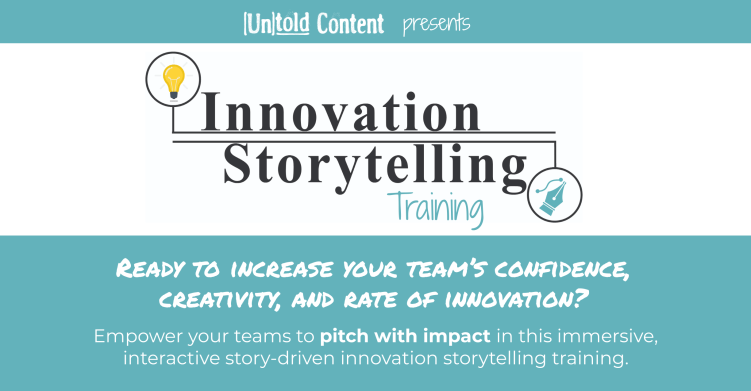
Katie: Are there other — I guess one of my questions for you is, when you’re going to build that kind of relationship with a potential startup or a company, how do you create alignment there? What needs to be present in order to trust that that relationship is a sustainable one or smart one to make?
Bill: Wow. Let me see if I can unpack that just a little bit. So if you sit back and think about it, finding your husband, you know, finding your pet, whatever those life experiences are, you go out and you test and you trial. Not saying anything at Stephen, but that’s what you have to do, you have to test and trial. And eventually you find that fit that’s right. And I think very much that’s the same issue in entrepreneurship. You’ve got to build relationships with people who can help. So, for example, for the startups that went through our accelerator, we had three days of pitch practices not for them to refine their speaking, but instead to socialize them with individuals who had an opportunity potentially at some point to make an investment in them, but more importantly could help coach them and build out their network for that same purpose. So at Miami University, Miami created a social impact fund to support the companies coming out of our accelerator. And they met with them. We had, gosh, a bunch of venture capitalists, four members of Queen City Angels — love that organization, do great work to work with our companies — and then we had a bunch of individuals in this community whose day job is philanthropy, like Eric Avner from Haile and Annemarie Henkel from Ignite Philanthropy and others, that came in and spent time with them to help them once again build out that business model. Or in the case of the philanthropists, it was to build out their impact model. That’s how you find that fit, is you just have to be in front of those people. And that’s what we see our role as, is as a connector.
Katie: Yes.
Bill: So give them the opportunity to build those relationships, to find their pet dog or their husband or their wife —
Katie: The right partner.
Bill: — Or their partner or whatever it may be.
Katie: So in those relationships, I’d be curious to know, do you see certain challenges that sort of arise frequently when it comes to the social innovator being able to get their story right? And is there certain feedback that you hear venture capitalists providing and philanthropists as well?
Bill: When you’re sitting across the table from somebody, you know, oftentimes in the social impact space — and I’d say more and more in everyday life — it’s somebody that probably doesn’t look like you. It’s probably somebody whose family circumstances or economic background or social experiences are different than yours. And so one of the challenges is making sure that we find alignment. And at the very least, if we can’t find that alignment, then we need to have empathy. So one of the things we’ve done is working with our coaches who coach these startups. We help them understand some of those differences and where implicit bias may come into this and about how race and gender are a factor. It’s just a part of life. And give them a new perspective to look at it and allow them to be better coaches, better mentors. And that’s been the fun part of this journey as well. It’s actually — great story, I was in three meetings yesterday and the first two of those meetings, I was the only male in the room. And I commented to that. That that is a circumstance that I found myself in, but how frequently the women in the room find that is the circumstances that they’re in every day, all day long.
Katie: Yes.
Bill: And about how important it is for us to understand that dynamic. And if you’re a person of color, same situation.
Katie: Yes. Yeah, it’s true. And I think — do you find that the world of social innovation is moving faster when it comes to diversity and inclusion than sort of the broader innovation community?
Bill: I think what I would — how I would answer that question is this. I think that our self awareness of those differences is accelerating at a higher rate than the change we’re able to accomplish.
Katie: Interesting. Yeah.
Bill: That is, I think that as we become more self-aware of those things, then you realize how big that climb is. A few months ago, Greater Cincinnati Foundation — actually probably a year ago — started an initiative around the whole notion of racial equity and has done some really amazing work around bringing people in to help them understand that racial divide and what it really means. I couldn’t get into some of the earlier schedules, but I’m really looking forward to a program that starts on June 2nd about racial equity and how it matters. And hats off to GCF for putting together that work, because I know when I come out of there that my self-awareness is going to have accelerated dramatically. Social Enterprise Innovation.
Katie: Yes.
Bill: And the work that I have to do is going to be multiple times more. But I think that’s part of my obligation as a citizen and a member of this community.
Katie: I couldn’t agree more. And I think Cincinnati in general has — is opening itself up to those conversations, to harder conversations, to be more vulnerable, and to question the structures that have sort of allowed privilege to exist where it has. And, again, I think part of the beauty of an organization like Flywheel to just be calling attention to social challenges of all sorts and shapes and not only racial challenges or gender gap divides, but pretty much anything that could be constituted as a problem impacting large amounts of people. How do you sort of — actually, this is an interesting question I have for you, and maybe I sound naive, but what sort of falls under the umbrella and what doesn’t when it comes to social impact, social innovation? Oh, and do you define these terms differently? I’m sorry, I asked five questions at once. So, yeah, what actually falls under the umbrella of social impact and social innovation?
Bill: So I’m going to start by saying that one of the great things about the work that I do — and others at Flywheel like Josie and Joe and others — is that we’re not just waving a banner about a problem, but what we’re doing is seeing the opportunities to solve those problems.
Katie: Yes.
Bill: Never completely. Never fast enough. Never enough. But it’s just great to be on that side of it. And so although we acknowledge where the gaps are in this community, we also have the opportunity to work on those. And that’s what I really like to work on. When it comes to this definition of social enterprise or social innovation or social ventures, my comment is, does it really matter what the definition is? What matters is, is that that founder, that the core being of that organization is built around some type of impact in this community. Not as just a sideline, not that they are going to for the next three days give away, you know, one percent of their gross receipts to a charity of some kind. But really, that it’s what they do and how they make their decisions every day, how they relate to their employees, how do they relate to the waste products that they put into the ecosystem. What opportunities do they give their customers to not only participate in the purchasing of their products, but also to have a social benefit, by the way, in which they inform them about what to purchase, to know that, you know, that one product has more negative impact than another one does. So I think it’s really measured more on that.
Katie: Do you think that — as we look more into the future — that there will even be room for businesses or startups to lack or to have a void when it comes to their awareness of the social impacts they’re making better or worse? I mean, I think in so many ways, this is — it’s just a critical part of the heart of what needs to be ideally in every organization.
Bill: Yeah. In 2011, when I joined Flywheel and we talked about social enterprise, I usually spent the first well, I’d say 9 out of 10 conversations were explaining there was something different than social media. And today, the notion of social enterprise or social ventures or social impact businesses, it’s well understood.
Katie: Yes.
Bill: And so I think in many cases the needle has moved — kind of like I was talking earlier about, you know, the issues of race and gender and the inequities that are there — the more we know, the more we know we need to do.
Katie: Yes.
Bill: And it’s not just to do it for — you can do it because you want to do good, but you can do really, really well when you do good. The marketplace rewards that. And you can see it every day. You can see it every day.
Katie: Isn’t that incredible?
Bill: It is.
Katie: It’s something that it’s unthinkable to me that it took sort of so long for there to be a loud conversation around that, that it was, you know, assumed that business could just be business or only profit driven, that that would somehow create a place where people wanted to work or that consumers wanted to buy from. And I think the demand is changing both sides, in terms of recruitment and retention of talent and also the impact and the ways in which consumers or customers can now see into the companies they purchase from. And there’s a higher standard than ever for responsibility and sustainability, diversity, inclusion, mission.
Bill: It makes great sense. One of our contributors to our program is Mary Miller, who is the owner, CEO kind of stepping out of the picture right now of JANCOA. So I’ll just say Mary Miller of JANCOA. And in her business, the turnover on an annual basis is over 400 percent. But JANCOA does it for less than I think the metric was 80 percent a year. Now, that still seems like a lot. But just imagine if a job turns — if people turn over in a job, what that means to their family. You know, they get started then they get knocked back, they get started then they get knocked back. So for her to offer ways in which to encourage her employees to dream forward, to think forward, to think about their future. There’s a guy by the name of Matthew Kelly who wrote a book about this called The Dream Manager. What that did was that gave — there was a very clear business case for that. Because it costs her every time she has to turn over a new position.
Katie: Absolutely.
Bill: So it makes good business sense. So, you know, let’s just do it.
Katie: I love that. What advice do you — this is my last question — what advice do you have for innovators, entrepreneurs, or even folks who are inside corporate? I don’t want to limit it only to someone with a disruptive idea. But what advice do you have to someone who has a business idea that has heart, that has purpose? What do you — how do you think they can harness the power of story to get buy-in?
Bill: Oh, my gosh. I would say that I think it’s really important to step out of your own circle and to find those individuals with whom you can connect that will help you amplify your story and help you refine that story. In the startup world here in Cincinnati, there’s no better place to do that then at Union Hall, all the free events there, or up at 1819 Innovation Hub in Mount Auburn. I guess I would say in the innovation corridor, those places have a ton of energy and a ton of smart people who can help people flush out those ideas and, frankly, keep them from making decisions that are a waste of their time and their savings and their mental energy and focus them on something will have a better return for them. So I think it’s really important to get connected.
Katie: Yes.
Bill: And you can do that at startupcincy.com. That’s one of the websites that Cintrifuse maintains. Just a great way to connect to that community.
Katie: I love that. Yeah. Being willing to share and don’t just sort of sit alone in your silo with your idea.
Bill: Particularly get outside your own circle.
Katie: Yes.
Bill: Great place to do it.
Katie: Yes. Bill, thank you so much for this conversation.
Bill: Thank you, it’s been fun.
Katie: Thanks for listening to this week’s episode. Be sure to follow us on social media and add your voice to the conversation. You can find us at Untold Content.
You can listen to more episodes of Untold Stories of Innovation Podcast.
*Interviews are not endorsements of individuals or businesses.

